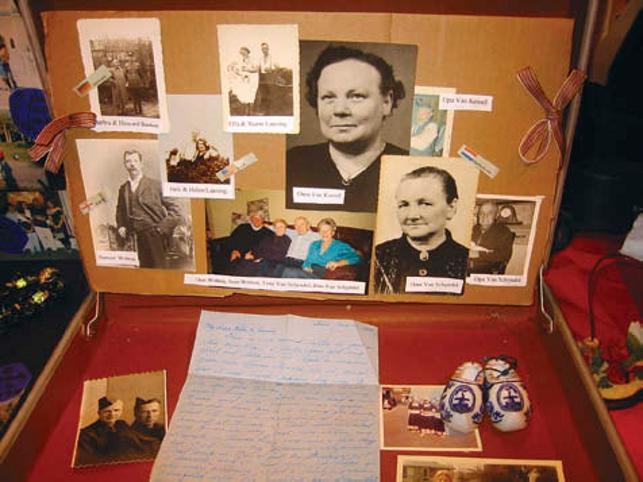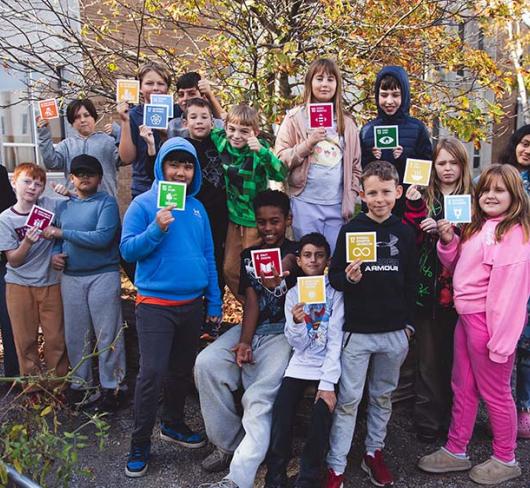
Thousands of people protest to defund the police in support of Black Lives Matter and all social injustice
against racism in Toronto on Friday, June 19, 2020. (The Canadian Press/Nathan Denette)
The Grade 6 Heritage Project
As an anthropology graduate I have always enjoyed learning not only about other cultures but about my own as well. I was keenly interested in finding a way to pass that curiosity on to my own students in a way that engaged them in significant discussions about racism, tolerance, and identity.
I decided on a project I had learned about at R. F. Downey Public School in Peterborough, which was based on the book Hana’s Suitcase by Karen Levine. This book became the foundation for a year-long heritage project.
Hana’s Suitcase is the story of Japanese teacher/curator Fumiko Ishioka who, urged on by her students, investigates the life of a young Jewish girl during World War II after she receives Hana’s suitcase among a collection of articles sent from the Auschwitz concentration camp. I began by reading the story aloud to my class. I then asked my students to assemble their own suitcases that, like Hana’s, would be based on their personal background and identity.
As a natural extension of our look at Hana’s Suitcase and of our focus on tolerance and diversity, students completed assignments based on the countries we were studying: Sri Lanka, Hong Kong, Ukraine, and Scotland. These included many different kinds of writing: paragraphs, letters, journals, persuasive writing, and reports. Students wrote a paragraph about our school’s namesake Adelaide McLaughlin and her contributions to our community. They also wrote a persuasive piece about Mahatma Gandhi, his accomplishments, and his nonviolent methods. Cooperative learning was an integral part of the project, and learning and social skills were consistently revisited and reinforced.
Art activities included family trees, flags, Ukrainian Easter eggs, Scottish baskets, time capsules, and the students’ own “passports.” We also hosted parents and community members as guest speakers for each country we reviewed.
One great thing about learning about other cultures is the food! Near the end of the year, students brought in a favourite family dish or one that originated from their ethnic background for our cultural potluck. This occasion became the basis for the Grade 6 Cultural Cookbook.
The culminating activity of our project centred on our heritage suitcases. Students included amazing and incredible artifacts some of which dated from as far back as the 1800s! They then planned and managed our Heritage Suitcase Gallery Opening. Kerry Yates, my grade 6 teaching partner, and her students also took part.
It was clear that the students were incredibly proud of their work, cared a great deal about our presentation, and were extraordinarily eager to communicate with guests. The Grade 6 Heritage Project was theirs, and every one of my pupils was involved in every aspect of our presentation. We extended the opening for an extra hour to accommodate our many guests – parents, teachers, and members of the Oshawa community.
Joe deBruijn, former principal at Adelaide McLaughlin, attended the Gallery Opening, and commented, “You could see how much thought they had put into their suitcases and how much they enjoyed researching their families and going back into their family roots. The parents who came to see the display, I think every one of them was just astonished at all the hard work.” John Konecny, a fellow teacher and guest, called the project “a triumph of inclusion” and praised the “well-researched multimedia exhibition.”
The students’ enthusiasm was apparent also in their academic work. Many guests told me they found it extraordinary. Parent Lori Korkola Work noted that “the opening generated a lot of excitement in our neighbourhood. It was exciting for the kids to participate and they felt incredibly proud. It was obvious that the kid cared a great deal about what they had done. All the students were quick to talk to people who they did not know and to volunteer information.”
Jennifer Langford felt it was wonderful that her daughter was excited about learning and researching her family history. She believed that not only had the project brought their family closer together, but that over the course of the year it had strengthened our classroom community as well.
After viewing our suitcases, a visitor from Oshawa’s Beth Zion Synagogue observed: “This is the most remarkable display I have ever seen. It makes everyone proud of their roots, their family, and their heritage – a powerful, poignant, heartfelt lesson for us all. This should be part of the grade 6 curriculum to teach what community, home, and family are all about!”
The Grade 6 Heritage Project gave students the opportunity to discover and tell their own stories and learn about those of others. In the end, the one reality that was especially highlighted and illuminated for each participant was this: Our similarities outweigh our differences. We all have varied and fascinating tales to tell and these are what ultimately connect us all.
Although this project was completed with grade 6 students, it could be attempted with all Junior grades. I do think, however, that grade 6 students are able to appreciate the scope of the project more fully. They can establish personal connections and make the links with their community and communities around the world. As teacher Chantal Garrett noted, grade 6 students have “a better understanding of the Holocaust, religious freedom, ethnocultural diversity, and basic human rights.”
A learning environment that embraces multiculturalism is more and more important for today’s students. When antiracist and diversity education is delivered in a way that engages learners and speaks to them at their level, they are eager to get involved. In my experience, once students have become engaged and start making those personal connections they begin to take ownership of their own learning, making many discoveries about themselves and developing an appreciation for the diverse and pluralistic nature of the world around them.

